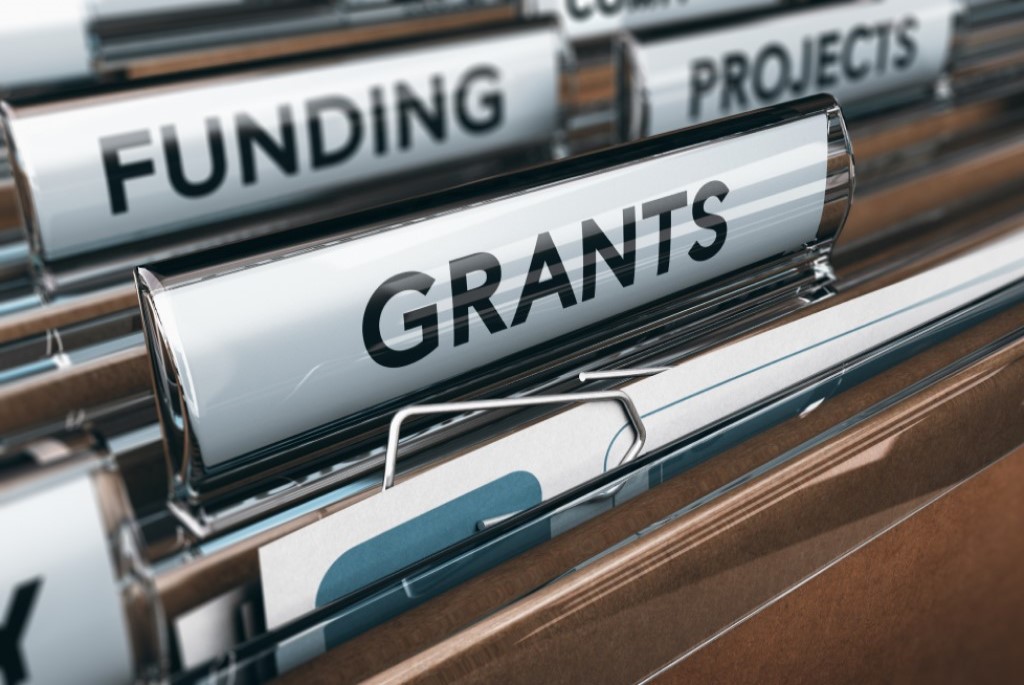Effective May 21, 2023, P&N has joined EisnerAmper. Read the full announcement here.

Although there is no road map for recovery from natural disasters like Hurricane Ida, P&N has experience responding to and supporting employees, clients, and communities in the wake of natural disasters including many hurricanes and the Great Flood of 2016.
During these recent natural disasters, P&N has used many different tools to assess and respond to the needs of our employees and our clients. These resources are not exhaustive, but we have compiled them into a guidebook in hopes that they may provide you with ideas to help your organization and community recover, as well as potentially reduce some of the time it takes to organize a response of this magnitude.
This guide is divided into three sections. Click the links below to jump directly to a section.
If you have any questions about the information in this guide, or need any assistance, please do not hesitate to reach out to P&N. Our thoughts and prayers are with all who have been impacted.
This guide is intended to be a resource for professional services firms and other businesses to determine their own response plans. It is not intended to be professional advice. Please seek professional advice as you consider the tax and legal implications of implementing the ideas included in this guide.
Operational Tools
The following section provides options and ideas for organizations to gain information from and distribute information to employees in the wake of a disaster.
Storm Relief Survey
In order to immediately understand how to help employees, consider sending a survey to all employees to gauge needs. This can allow you to deploy financial and other resources quickly. A sample survey is included below. If you do not have the resources to create, deploy, and track a survey of this nature, contact P&N for assistance.
Survey Questions
You and your family are in our thoughts and prayers. Please help us understand your current needs and how we can assist you.
- Name
- Department
- County of residence
- Was your residence impacted? (Y/N)
- If you evacuated, where are you currently residing? (Select one)
- Family
- Friends
- Hotel
- Shelter
- Other
- How many people are in your household?
- Did you lose a vehicle?
- How can your coworkers help you? (Check all that apply)
- Food/meals
- Clothing
- Toiletries
- Household items/cleaning supplies
- Clean up assistance/manual labor
- Childcare assistance/babysitting
- A place to stay
- Laundry
- Equipment (shovels, power washers, generators, etc.)
- Other
Internal Communications
How and what to communicate to employees can be complicated by technology and connectivity issues, lack of information on where employees are, and the fluidity of the situation. A strong but simple internal communications plan can help ensure employees stay connected.
Communication Mechanisms:
In addition to basic communication phone trees and emails, optional communication mechanisms to consider are listed below.
- If you do not have a text messaging system in place, we recommend MessageMedia Business Messaging. It allows for quick and easy communication with employees and also allows employees to respond to you.
- Consider adding an emergency line (800 number) that employees can call and retrieve or leave messages.
- Facebook and Twitter are excellent ways to communicate with clients/customers and employees on the status of office closures and other high-level information.
Communication Types:
The purpose of this is to provide some types of information employees may need to receive from their employer. If you would like examples of any of these communications, please contact P&N.
- Updates from CEO/Managing Partner on safety of employees and ways the company is immediately helping.
- Updates from CEO/Managing Partner on ways employees can help.
- Payroll or Time Entry instructions.
- Information on the organization’s Employee Assistance Program (EAP), if applicable, for people dealing with the psychological and/or familial effects of the storm.
- Professional resources and disaster updates to inform employees about ways to help clients/customers who were impacted.
Employee Assistance Options
The following section provides ideas to assist impacted employees in their recovery, as well as to coordinate the efforts of other employees volunteering to assist.
Employee Emergency Communication and Assistance
Impacted employees will likely need immediate financial assistance for expenses such as hotels, cleaning supplies, storage solutions, etc. Companies may consider providing a Disaster Relief Payment for short-term incidental expenses. If you choose to do this, you will need to consider the proper channels for distributing emergency funds so they are not taxable for employees. If you need assistance with this, please let us know. A sample communication is included below.
Coordinate Efforts
In addition to immediate financial support, one of the best ways to support storm victims is to provide a mechanism for employees to help their impacted co-workers. Employees want to help, but they often don’t know the best way to contribute outside of writing a check. Companies might consider coordinating efforts in the following areas:
- Establishing an Emergency Assistance Fund.
- Coordinating volunteers to demo and clean destroyed/flooded homes.
- Providing meals and household items for impacted employees.
- Organizing a way for storm-affected employees to seek advice and information from each other.
- Continuing to support storm victims as the holidays approach.
Employee Assistance Fund
As an example, P&N created an Employee Disaster Assistance Fund to assist employees whose homes, personal property, and/or vehicles were damaged or destroyed in the storm. The fund collected more than $130,000, which went directly to P&N employees. Communications were sent internally within our firm, to the international association of which we were a member, and directly to organizations who inquired about how to help. We did not publicize it to the general community due to the extreme needs being faced by the entire community.
A sample communication is below. If you would like the decision criteria for distributing grants or other information on setting up an employee fund, please contact P&N.
Employee Assistance Fund Sample Communication
Clean-Up Crews
Companies might consider pairing employees who need help demolishing and cleaning up their homes with employees and others who want to help. To do this, send an email to all employees asking who wants to volunteer, put them in teams based on locations, coordinate shifts with the affected employees, and deploy the teams on a set schedule.
Employee Meals and Household Items
To provide basic household items, food, and toiletries, companies can survey employee volunteers to determine who wants to assist, and then make assignments for donations or purchases. Donors and recipients should be kept anonymous to each other, as a measure of respect and privacy.
Process:
- Ask each family what their immediate grocery and household needs are, including food allergy information, special items for infants, pets, and the families’ needs for clothing, bedding, towels, etc. Assign volunteers to fulfill the lists.
- Create a list of pantry basics and other household necessities (see below), and assign volunteers to fulfill them for each family. To streamline, you can assign one person to bring all of an individual item for all affected families, instead of having individuals shop for all items for a single family (i.e., one person brings 10 bottles of shampoo or 10 loaves of bread).
- As the emergency subsides and people start to rebuild, consider providing one hot dinner each week for several weeks through a meal delivery service. Employee volunteers have the opportunity to pay for the meals for each family.
Pantry Starter Set:
- Can opener
- Vegetable peeler
- Large jar of peanut butter (creamy)
- 1 jar of grape jelly
- Loaf of sandwich bread
- 1 bottle of mustard
- 1 jar of mayonnaise
- 1 bottle of ketchup
- 1 bottle of hot sauce
- 24-32 ounces of vegetable oil
- 4-pound bag of granulated sugar
- Can of baking powder
- Box of baking soda
- Small bag of cornmeal
- 5-pound bag of all-purpose flour
- Box of table salt or pack with pre-filled salt/pepper shaker
- Can of black pepper
- 2 bags of dried beans: red, white (navy, cannellini, etc.)
- 2 bags of rice
- 2 pounds of spaghetti
- 2 boxes of pasta
- 2 large containers (jars or cans) of spaghetti sauce
- 6 cans chicken broth
- 6 canned tomatoes (crushed, diced)
- 5-pound bag of yellow or white onions
- 5-pound bag of russet potatoes
Toiletry Kit:
- Shampoo
- Conditioner
- Bar soap or body wash
- 5 wash cloths
- Disposable razors
- Nail clippers
- Cotton swabs
- Toothbrush
Survivors’ Lunch
The after-effects of the storm are both extremely practical (filing paperwork, securing contractors, buying cleaning supplies) as well as extremely emotional. Several weeks after the storm, you might consider inviting employees who suffered losses to lunch in your office. This allows them to connect with fellow survivors to discuss things they have found helpful as well as things they still need.
Attendees can be encouraged to discuss the following topics, although this should be optional in order to avoid causing undue stress:
- Top 2-3 things you have found most helpful or beneficial (resources, things you learned, tips from your insurance adjuster/FEMA, contractors, etc.).
- Top 2-3 things you are struggling with or finding challenging (others in the group may have suggestions).
Holiday Toy Drive
The needs of storm-impacted individuals do not stop as the holidays approach, and with so many basic needs still unmet, holiday celebrations are not the most pressing. Companies can consider organizing a toy drive for impacted employees, in addition to any regular holiday charity involvement.
Employees who have children living at home (who have not yet graduated from high school), can be invited to participate by providing the following information:
- Child’s first name (pseudonyms can be provided to the adopting team member in order to maintain confidentiality)
- Child’s age
- Child’s gender
- Child’s clothing sizes
- Special wish (i.e., is there anything specific the child wishes for this year?)
Client Resources
Client Communications
It is important to let clients/customers know of any office closures and remind them that you are ready to assist them as they recover. To help clients with disaster recovery efforts, P&N provides clients with information and resources on topics such as employer sponsored disaster relief benefits, restoring technology, casualty losses and employee leave sharing. If you would like to share this information with clients, you may find updated resources at www.pncpa.com/insights. We will continue to add information and resources to this page as they become available.
If you would like more information on anything contained in this document, please contact:
Rachael Higginbotham
rhigginbotham@pncpa.com
225-408-4719
Get more P&N insights for your organization:
This information was originally published on August 29, 2017.




